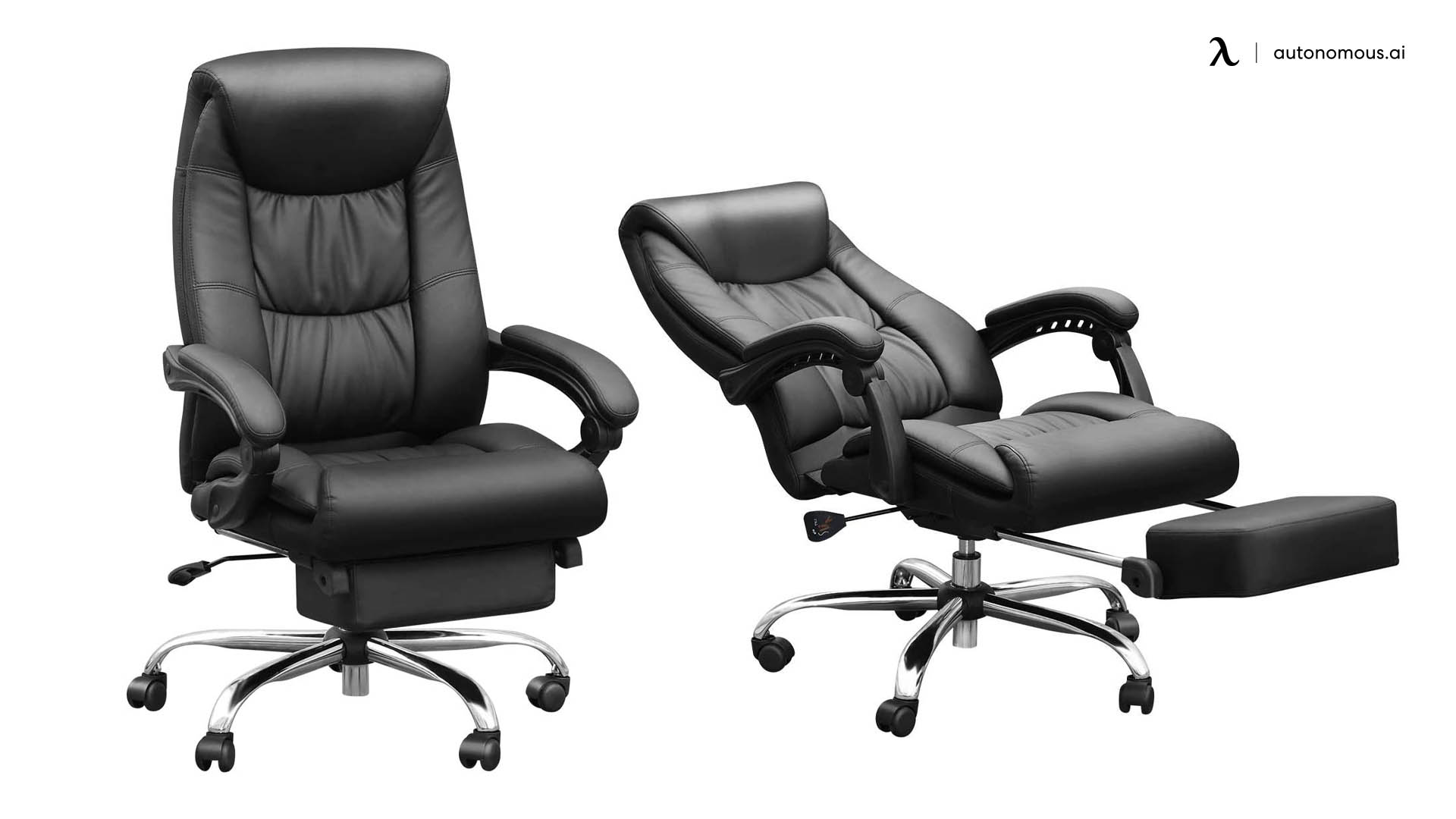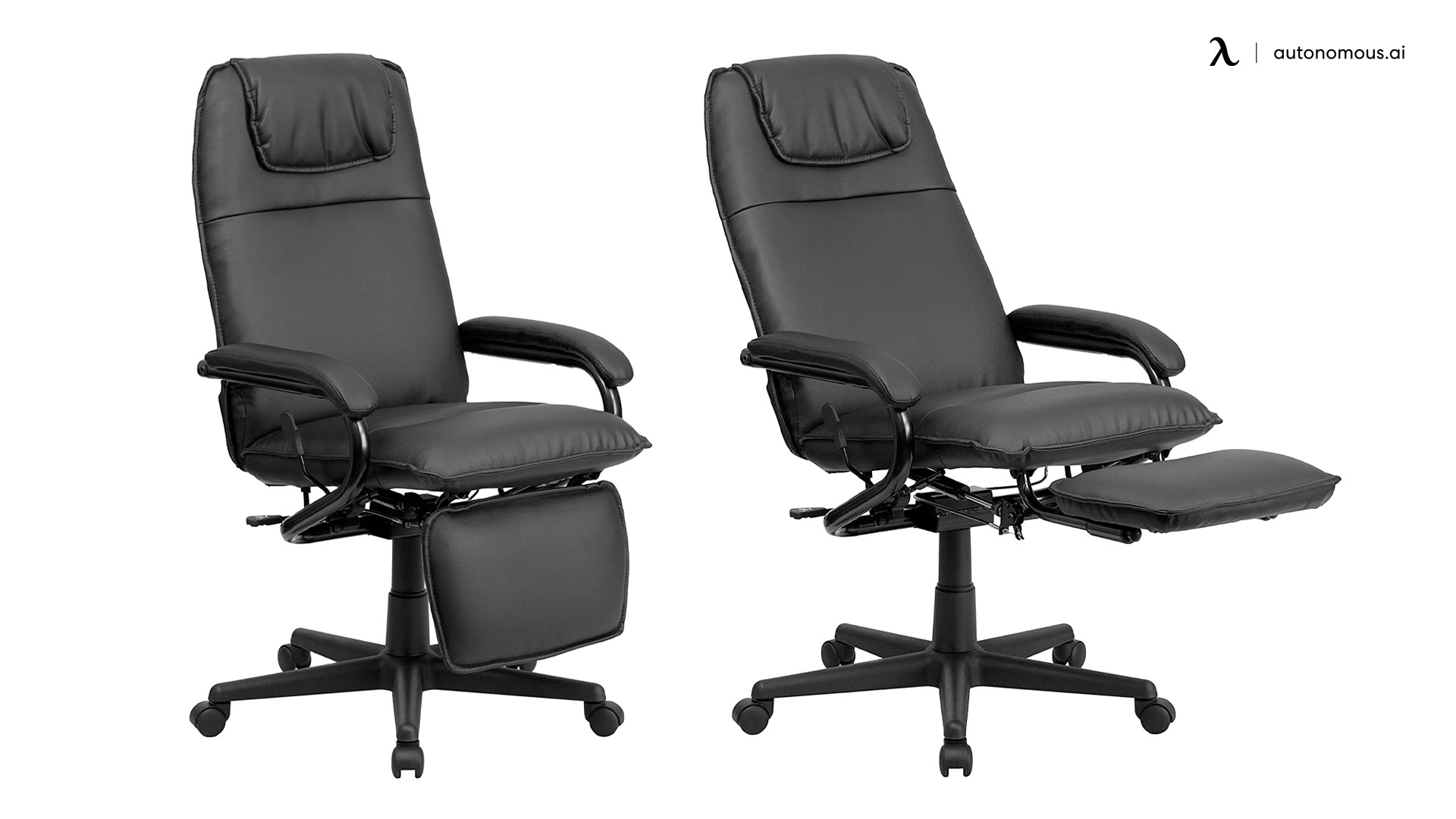Top Features of Office Chairs with Leg Support

The pursuit of comfort and ergonomic excellence in the workplace has led to a significant evolution in office chair design. No longer are we content with simple seating; the integration of leg support has transformed the landscape, offering a level of postural support previously unimaginable. This enhanced support translates not only into increased comfort but also into demonstrable improvements in productivity and overall well-being. The key differentiators lie in the meticulous attention to ergonomics, the extent of adjustability, and the quality of materials employed.
Best office chair with leg support – High-quality office chairs with leg support are a testament to thoughtful design. They go beyond merely providing a place to sit; they actively participate in supporting the body’s natural posture, minimizing strain and promoting healthy habits. This is achieved through a sophisticated interplay of features, each carefully considered to optimize the user experience. The difference between a standard chair and a premium model with leg support is akin to the difference between a basic automobile and a luxury sedan – both get you from point A to point B, but the journey is vastly different.
Ergonomic Design Considerations
Ergonomics is the cornerstone of superior office chair design. Chairs incorporating leg support prioritize the natural alignment of the spine, hips, and legs. This is achieved through features such as adjustable lumbar support, which conforms to the curvature of the lower back, preventing slouching and reducing pressure on the intervertebral discs. Furthermore, the seat pan’s depth and angle are carefully considered to support proper thigh posture, minimizing pressure points and encouraging healthy blood circulation. The overall design often features contoured seating surfaces and breathable materials to enhance comfort and prevent overheating. A lack of these features in standard chairs can lead to discomfort, fatigue, and long-term health problems.
Leg Support Mechanisms: A Comparative Analysis
Several mechanisms provide leg support, each with its advantages. Footrests, for instance, are simple yet effective, offering a platform to elevate the feet, reducing pressure on the lower back and improving circulation. They are often adjustable in height and angle, catering to individual preferences and desk heights. Consider the Herman Miller Aeron chair, often cited for its ergonomic design but lacking integrated leg support, highlighting the supplementary benefit a footrest can provide. In contrast, some chairs integrate built-in leg rests that fold away neatly when not needed, offering a more integrated solution. Finally, adjustable height mechanisms allow for customized positioning of the entire chair, ensuring optimal support for individuals of varying heights.
Materials and Construction
The materials used significantly impact the chair’s durability, comfort, and overall longevity. High-quality office chairs with leg support often utilize premium materials such as breathable mesh fabrics for the backrest and seat, promoting airflow and preventing overheating. The frame is typically constructed from robust materials like aluminum or high-grade steel, ensuring stability and longevity. In contrast, cheaper chairs may use less durable plastics and thinner fabrics, leading to reduced comfort and a shorter lifespan. The padding is another critical factor; high-density foam provides superior support and comfort compared to thinner, less supportive alternatives. Consider the difference in feel and longevity between a chair with high-density foam cushioning and one with thin, easily compressed padding.
Comparison of Popular Office Chairs with Leg Support
| Chair Name | Key Features | Price Range | User Rating (Average) |
|---|---|---|---|
| Steelcase Leap | Adjustable lumbar support, adjustable armrests, breathable mesh back, optional headrest | $1000 – $1500 | 4.5 stars |
| Herman Miller Embody | Responsive backrest, adjustable seat depth, excellent lumbar support, no built-in footrest (requires separate purchase) | $1500 – $2000 | 4.7 stars |
| Humanscale Freedom | Self-adjusting backrest, responsive seat, excellent posture support, no built-in footrest (requires separate purchase) | $1200 – $1800 | 4.6 stars |
| Haworth Fern | Adjustable lumbar support, adjustable armrests, breathable mesh back, optional headrest and footrest | $800 – $1200 | 4.4 stars |
Buying Guide and Considerations for Office Chairs with Leg Support: Best Office Chair With Leg Support

Finding the right office chair with leg support can feel like navigating a labyrinth of jargon and conflicting claims. But with a little careful consideration, the process can be surprisingly straightforward. This guide offers a practical approach, stripping away the technical complexities to leave you with the essential information needed to make an informed decision.
Budgetary Considerations and Value Assessment, Best office chair with leg support
Your budget significantly influences your choices. A modest budget might limit you to simpler models, while a larger budget opens doors to premium features like adjustable lumbar support and advanced ergonomic designs. Remember that “expensive” doesn’t automatically equate to “best.” Prioritize features that directly address your needs. For example, if you primarily suffer from lower back pain, a chair with excellent lumbar support is more valuable than one with multiple recline positions, which you might never use. Consider the chair as an investment in your long-term comfort and health, rather than simply a piece of furniture. A well-chosen chair in a mid-range price bracket often offers excellent value.
Body Type and Ergonomic Matching
The chair must fit your body. A chair too small will cramp you, while one too large will leave you unsupported. Measure your height and weight and check the manufacturer’s specifications. Pay attention to seat width and depth, backrest height, and armrest adjustability. Ideally, your feet should rest flat on the floor, and your thighs should be parallel to the ground when seated. The backrest should support your lower back’s natural curve. If you are unusually tall or short, or have specific postural needs, you may require a chair with extensive customization options.
Workspace Integration and Practicality
Consider your workspace. A large chair might not fit comfortably in a small office. The chair’s material should be durable and easy to clean, especially if you work in a less-than-pristine environment. Think about the chair’s aesthetic; it should complement your workspace without clashing with the overall décor. Does the chair easily roll across your floor type? Does it have sufficient height adjustment to work with your desk? These seemingly minor details can dramatically impact your daily comfort and productivity.
Potential Drawbacks and Alternative Solutions
Some users find that leg rests can restrict movement and become uncomfortable over prolonged periods. Others might find that the added bulk makes the chair less maneuverable. If you anticipate these issues, consider a chair with an adjustable leg rest that can be easily retracted or removed. Alternatively, a footrest, placed separately on the floor, can offer similar benefits without the potential drawbacks of integrated leg support. Remember that the “perfect” chair is subjective; prioritize the features that best meet your individual needs and preferences.
